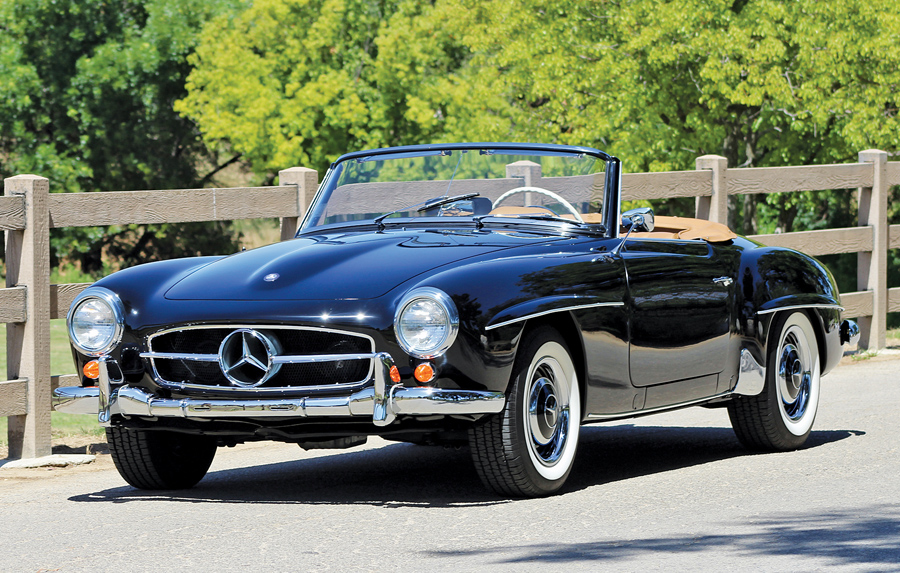Chassis Number: 1210427502033
This 1957 Mercedes-Benz 190SL has benefited from a meticulous, well-executed restoration. Presented in black, with a black soft top and tan leather interior, the car shows beautifully.
A 1.9-liter, 4-cylinder engine paired to a 4-speed manual transmission powers this Mercedes-Benz.
The car is well-sorted mechanically and features the optional wind-up clock and Becker Mexico radio. This 190SL comes from a very prominent Southern California collection and is ready for future ownership to enjoy.

